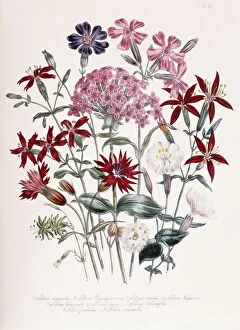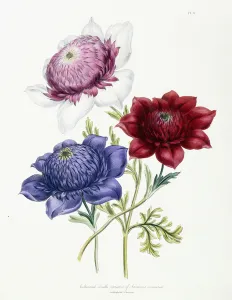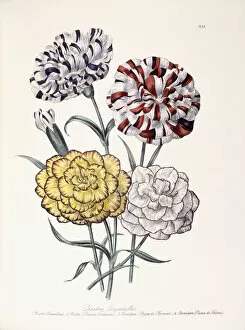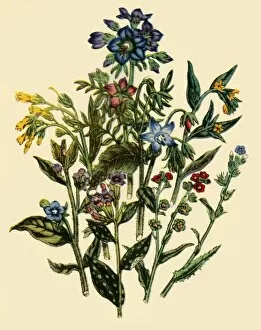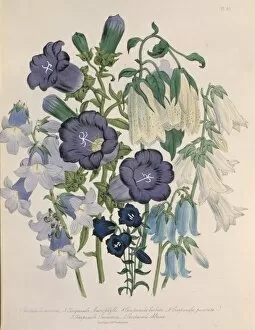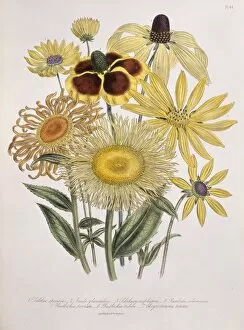Jane Wells Loudon Collection
Jane Wells Loudon was a talented artist and botanist who left an indelible mark on the world of botanical illustration
All Professionally Made to Order for Quick Shipping
Jane Wells Loudon was a talented artist and botanist who left an indelible mark on the world of botanical illustration. Her hand-coloured lithographs, such as "Crinum arenarium and Cobergia incarnata" (1840-1844), showcase her meticulous attention to detail and vibrant use of color. In her work "Catchfly (Silene)" (1843-49), Loudon captures the delicate beauty of this flower with precision, highlighting its intricate petals and subtle hues. Similarly, her depiction of "Cultivated double varieties of Anemone coronarial" (1843-49) showcases the diversity within this species, each bloom unique in its own right. Loudon's talent extends beyond individual flowers; she also expertly portrays groupings like "A variety of Carnations" (Emmeline, Princess Frederica, Bijou de Clermont) from the Forget-Me-Not Family. The composition is harmonious, with each flower complementing the others in both form and color. Throughout her career, Loudon explored various plant species through her artistry. From the bold red blooms of Lychnis chalcedonica to the delicate petals of Godetia vinosa, she captured their essence on paper for all to admire. Even lesser-known plants like Mandragora autumnalis and Telekia speciosa found their place in her portfolio. Loudon's skillful renderings extend beyond just flowers; she also depicted plants like Campanula medium (Canterbury bells), Hibiscus africanus (bladder katmia), and Papaver orientale (oriental poppy). Each artwork showcases not only her artistic prowess but also serves as a valuable record for future generations to appreciate these botanical wonders. As we delve into Jane Wells Loudon's body of work spanning several decades, it becomes evident that she possessed an innate ability to capture the essence of nature's beauty.


